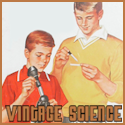Benchmark: The student writes narrative text using the writing process.
- The student understands and develops a focused written piece that includes plot elements (e.g. initiating event, rising and falling action, climax, conflict, setting, character development resolution).
- Uses (1) personal experience (2) observations (3) prior knowledge in written text.
- Clarifies the main ideas by selecting relevant details that enrich the central theme or storyline.
- Analyzes and understands implications of plagiarism (e.g. ethical, legal).
- Understands and independently uses appropriate strategies to generate narrative text (e.g. brainstorming, listing, webbing, identifying information from print sources).
- Writes a piece with an inviting introduction, appropriate body, and satisfying conclusion that leaves the reader with a sense of resolution.
- Selects transitions to connect ideas within and between paragraphs in the writing piece.
- Selects original and compelling vocabulary and/or figurative language appropriate for the purpose and audience.
- Selects words that are suitable and precise, which create appropriate imagery (e.g. explicit nouns, vivid verbs, natural modifiers).
- Word Painting: A Guide to Write More Descriptively by Rebecca McClanahan
- Includes vocabulary particular to the topic and provides ease of understanding.
- Varies sentence structures and lengths (e.g. simple, compound, complex).
- The Art of Styling Sentences by K.D. Sullivan
- Sentence Composing for Middle School: A Worktext on Sentence Variety and Maturity by Don Killgallson
- Develops a variety of sentence beginnings that build upon previous sentence to guide the reader from one sentence to another.
- Identifies and avoids writing sentence fragments.
- Writes using effective dialogue that sounds conversational and natural.
- Demonstrates correct use of mechanics and punctuation (e.g. semi-colons, colons, underlining, italics, and centered titles).
- A Writer's Guide to Perfect Punctuation by Victor C. Pellegrino
- Uses correct grammar and usage for clarity.
- Spells familiar and most unfamiliar words correctly and uses available resources (e.g. dictionary, spell check).
- Uses correct paragraph divisions to reinforce the organizational structure of the text.
- A Writer's Guide to Powerful Paragraphs by Victor C. Pellegrino
- Paragraph Construction Sandwich Chart: Graphic Organizer from Education Place
- Adventures in Fantasy: Lessons and Activities in Narrative and Descriptive Writing, Grades 5-9 by John Gust
- Teaching the Story: Fiction Writing in Grades 4-8 by Carol Baldwin
- Traits of Writing: The Complete Guide for Middle School by Ruth Culham
- Writers Inc: A Student Handbook for Writing and Learning by Patrick Sebranek, Dave Kemper, and Verne Meyer
Labels: Writing
0 Comments:
Subscribe to:
Post Comments (Atom)























